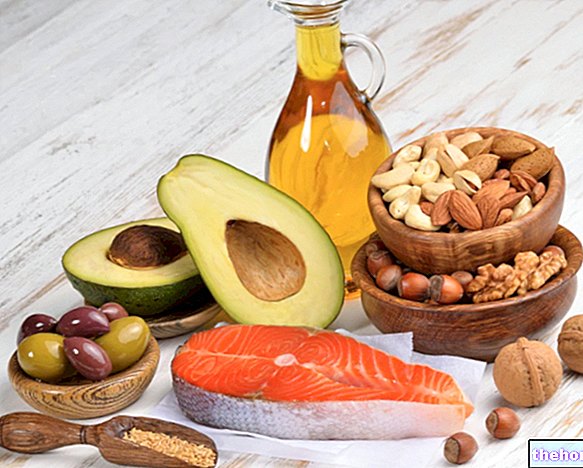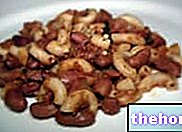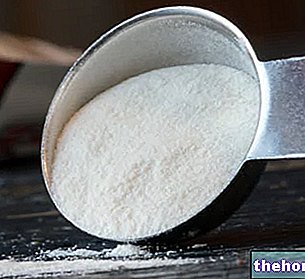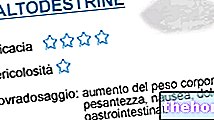Manna and Mannitol
Mannitol is a simple carbohydrate belonging to the hexahydric sugar alcohols category. Analyzing its structural formula, we note in fact the presence of six hydroxyl groups (OH), distributed along an aliphatic chain composed of as many saturated carbon atoms.

Mannitol is widely distributed in the plant world. The most significant concentrations are found in the manna of the ash tree (30-60%), in the thallus of the laminaria and the fucus (marine algae), in the leaves and drupes of the olive tree, in the fig, in the celery and in edible mushrooms such as Lactarius spp. And Agaricus spp. On an industrial level, mannitol is produced from sucrose.
Laxative and sweetener
Mannitol as a laxative and acaryogenic sweetener for diabetics
By cutting the bark of the ash, a dense sap containing 30-60% of mannitol comes out, which dries in the open air. We are talking about manna, an all-natural remedy used as a mild laxative, especially in childhood. For this purpose, sugar is administered at the rate of one gram for each year of age, dissolving it in water or milk as prescribed by the pediatrician. In adults, the dose indicated for laxative purposes is 10-20 grams per day. .
When taken orally, mannitol acts as an osmotic laxative, drawing water into the intestinal lumen and increasing the volume and softness of the stool. The increase in fecal volume in turn represents a powerful stimulus for intestinal peristalsis (set of propulsive rhythmic contractions responsible for the advancement of the stool towards the outside).
Also orally, mannitol can be used as an alternative sweetener to traditional sucrose. Its sweetening power is in fact equal to about 50% of that of cooking sugar, with the advantage of being hypocaloric and acaryogenic, and with a metabolism independent of insulin (a particularly useful feature in the presence of diabetes); however, this laxative effect limits its use in this sense.
Diuretic
Mannitol as a diuretic and side effects
Parenterally - by intravenous infusion of a 20% aqueous solution, at the rate of 0.5-1 gram of mannitol per kg of body weight, in 15-30 minutes - mannitol is used as an osmotic diuretic, due to its demonstrated ability to draw water inside the renal tubules. It also has the ability to decrease intracranial and intraocular pressure, so much so that it traditionally represents the drug of choice for decreasing cerebral edema. The mannitol present in the blood vessels of the brain draws water from the cerebral interstices towards the lumen of the vessels themselves, precisely reducing the edema; however, when too much is administered or there are ample solutions continuously at the vascular level, the osmotic effect changes direction , aggravating the edema (even the haemoconcentration resulting from excessive diuresis would prove dangerous in this sense). In addition to its osmotic properties, mannitol can eliminate free radicals involved in oxidative stress and improve microvascular flow within the injured brain according to various mechanisms.
During treatment with intravenous mannitol, particular attention must be paid to controlling the body's water and electrolyte balance. Due to its diuretic properties, mannitol - even when taken orally - is not recommended for hypotensive (low blood pressure), hypovolemic (e.g. dehydrated), collapsed, anuria or congestive heart failure patients. In high doses, mannitol taken orally as a laxative can cause flatulence, with cramps and abdominal pain.
Diagnostics
Mannitol to evaluate the health of the intestinal mucosa
In so-called functional medicine, mannitol is used to evaluate the integrity of the intestinal mucosa responsible for the absorption of nutrients. In this regard, this monosaccharide is administered orally in known concentrations, together with predetermined quantities of lactulose (an indigestible disaccharide). The choice of these two sugars is significant: mannitol, in fact, is easily absorbed by the intestinal mucosa, while the exact opposite occurs for lactulose. Consequently, low concentrations of mannitol and lactulose in the urine indicate a reduced ability to intestinal absorption (malabsorption), while high urinary concentrations of lactulose and mannitol reflect an "excessive permeability of the enteric mucosa.
Other Foods - Sweeteners Acesulfame K Aspartame Sugar beet Sugar cane Sodium cyclamate Dextrose Sweeteners Erythritol Fructose Maltose Mannitol Molasses Saccharin Saccharose Maple syrup Agave syrup Fructose syrup Glucose syrup Sugar sorbitol Articles Stevia Sucralitol sugar SWEETENERS Categories Alcoholic Foods Meat Cereals and derivatives Sweeteners Sweets Offal Fruit Dried fruit Milk and Legumes Oils and Fats Fish and fishery products Salami Spices Vegetables Health recipes Appetizers Bread, Pizza and Brioche First courses Second courses Vegetables and Salads Sweets and Desserts Ice cream and sorbets Syrups, liqueurs and grappas Basic Preparations ---- In the Kitchen with leftovers Carnival recipes Christmas recipes Light diet recipes tici Recipes for the Holidays Recipes for Valentine's Day Vegetarian Recipes Protein Recipes Regional Recipes Vegan Recipes




























